The US is threatening to impose tariffs on automotive imports from Canada and Mexico, testing the resilience of North American manufacturing. The move could drive up costs, disrupt supply chains, and challenge the stability of the US-Mexico-Canada Agreement (USMCA), just as the industry navigates nearshoring, investment shifts, and electrification.
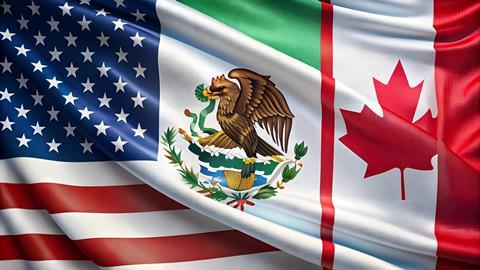
”This comes as the US imported 3.6 million light vehicles from Canada and Mexico last year, representing 70% of the 5.3 million vehicles built in those countries”
The North American automotive manufacturing sector is once again facing uncertainty as US president Donald Trump threatens to impose 25% tariffs on imports from Canada and Mexico. The move, justified by the White House under national security provisions, citing “[the] extraordinary threat posed by illegal aliens and drugs, including deadly fentanyl, [which] constitutes a national emergency under the International Emergency Economic Powers Act”, is poised to upend the calibrated supply chains that underpin vehicle production across the region.
Although last-minute decisions have delayed the implementation of these tariffs beyond the original February 4 deadline, the industry remains on edge. Carmakers and suppliers are re-evaluating their production strategies in anticipation of unforgivingly higher costs and the possibility of retaliatory trade measures from both Canada and Mexico.
Tariffs and Turbulence: how US trade policies threaten North American auto manufacturing
If enforced, the tariffs could increase the average price of a vehicle in the US by $3,000, according to analysts from Wolfe Research, and TD Economics. Similarly, Jefferies analysts project that these tariffs could raise average new car prices by $2,700. This comes as the US imported 3.6 million light vehicles from Canada and Mexico last year, representing 70% of the 5.3 million vehicles built in those countries (equal to 22% of all vehicles sold in the US) according to S&P Global Mobility. Mexico, currently the largest source of US vehicle imports, exported $92.9 billion worth of automotive products, including passenger vehicles, light trucks and automotive parts) to the US in 2023 alone.
GM, Nissan, and Stellantis, Mexico’s top three carmakers, export around 80% of their Mexican production to the US, while Ford sources just under 15% of its US-market vehicles from Mexico. BMW also has a key footprint in the region.
Mexico as a strong link in the North American automotive production chain
”The proposed imposition of a 25% tariff on Mexican and Canadian imports could upend the economic logic that has defined the industry for decades”

Mexico’s automotive industry outstripped its previous 2024 records, setting new benchmarks for both production and exports. According to the Automotive Industry Administrative Registry of Light Vehicles, published by the National Institute of Statistics and Geography (Inegi), manufacturers assembled 3,989,403 vehicles between January and December, a 5.6% increase on the previous year and surpassing the previous high set in 2017. Exports rose in tandem, reaching 3,479,086 units, up 5.4% from 2023 and exceeding the record set in 2018.
The figures clearly show the automotve sector’s central role in the Mexican economy. Automotive manufacturing and industry remains a crucial generator of high-value employment, a magnet for foreign direct investment, and a significant contributor to GDP, according to the Mexican Automotive Industry Association (AMIA).
As ever, the United States remained the dominant destination for Mexican-built vehicles. Of the total exported, 2.77m units—nearly 80%—headed north, reinforcing the industry’s deep integration with its most important trading partner.
Canada’s key role in US automotive production
Canada plays a significant role in US automotive manufacturing, with Canadian plants primarily serving the US market. Ford, GM, and Stellantis maintain extensive operations in Ontario, producing vehicles such as the Ford Edge, Chevrolet Silverado, and Chrysler Pacifica. Approximately 85% of Canadian vehicle production is exported to the US. From a supply chain perspective, The Canadian automotive industry is particularly vulnerable to tariffs given its reliance on cross-border component shipments.
”The five largest vehicle manufacturers in North America—GM, Ford, Stellantis, Toyota, and VW—are particularly exposed to trade disruptions”
“The North American supply chain is so highly integrated, that many experts have confirmed that the proposed 25% tariffs would make vehicle production unviable – not only for Mexico and Canada, but also for the US based OEMs that Trump claims to want to promote under the ‘America First’ protectionist agenda”
- Daniel Harrison, Automotive Analyst, Ultima Media
GM, Ford, Stellantis, Toyota, and VW: Production by OEM and export dependencies
The North American automotive industry is a complex ecosystem, defined as much by its efficiencies as by its vulnerabilities. The United States, Mexico, and Canada operate as a tightly interwoven network, with supply chains stretching across borders and vehicles assembled in one country often composed of parts from another. But this finely tuned system is now at risk. The proposed imposition of a 25% tariff on Mexican and Canadian imports could upend the economic logic that has defined the industry for decades.
Ultima Media’s Automotive Analyst, Daniel Harrison, offered comment, saying, “The North American supply chain is so highly integrated, that many experts have confirmed that the proposed 25% tariffs would make vehicle production unviable – not only for Mexico and Canada, but also for the US based OEMs that Trump claims to want to promote under the ‘America First’ protectionist agenda.”
The five largest vehicle manufacturers in North America—GM, Ford, Stellantis, Toyota, and VW—are particularly exposed to trade disruptions. GM produces more than 700,000 vehicles annually in Mexico, with over 80% exported to the US. Ford builds models such as the Mustang Mach-E in Mexico, with nearly 90% of its production destined for the US. Stellantis’ Jeep and RAM brands also rely heavily on Mexican output for US sales.
Toyota, which operates major plants in both Mexico and Canada, exports a significant portion of its production to the US, including models like the Tacoma. VW is among the most vulnerable, with more than 43% of its US-bound vehicles produced in Mexico.
”GM, for instance, builds more than 700,000 vehicles annually in Mexico, with over 80% destined for the United States”
An inter-regional production foundation now bracing for impact
Mexico’s role as a production hub has expanded in recent years, with the country producing 3.5 million vehicles annually. Of these, roughly 90% are exported, and nearly three-quarters end up in the United States. Canada, too, is deeply embedded in the US automotive supply chain.
Ontario’s assembly plants churn out hundreds of thousands of vehicles annually, with Ford, GM, and Stellantis among the key players. Vehicles like the Chevrolet Equinox, Chrysler Pacifica, and Toyota RAV4 all have Canadian roots before they cross the border into the US market.
The proposed tariffs would land hardest on manufacturers that have invested heavily in Mexico and Canada. GM, for instance, builds more than 700,000 vehicles annually in Mexico, with over 80% destined for the United States.
Ford’s Mustang Mach-E, produced in Cuautitlán, is almost entirely an export product, with nearly 90% shipped to American dealerships. Stellantis relies on its Mexican plants for high-margin Jeep and RAM models, which would become significantly costlier under the new tariffs.
”Higher prices could depress demand, further straining an industry already grappling with slowing sales and shifting consumer preferences”
Disrupting an intricate supply chain amongst vehicle production
The tariffs would not only hit finished vehicles but also parts, many of which cross borders multiple times before final assembly. The North American supply chain operates on a just-in-time basis, designed to minimise inventory costs. Tariffs would throw sand into the gears of this system, raising costs and increasing delays.
A Ford F-150 assembled in Michigan, for instance, relies on transmissions from Mexico. Similarly, many GM and Stellantis models are fitted with engines built south of the border. Tariffs on these parts would drive up production costs and force automakers to rethink their supply strategies.
Some manufacturers may choose to absorb the costs, but more likely, they will be passed on to consumers. As stated, analysts already predict that tariffs could increase the average price of a new vehicle by $3,000 or more. Budget-friendly models like the Nissan Sentra and Honda HR-V, which are assembled in Mexico and targeted at cost-conscious buyers, would be particularly affected. Higher prices could depress demand, further straining an industry already grappling with slowing sales and shifting consumer preferences.
”If Mexico and Canada respond with countermeasures, American-built vehicles could face similar tariffs abroad, making them less competitive in key export markets”
Strategic recalibrations in light of known-unknowns
Manufacturers are already considering contingency plans. Some, such as Ford and GM, have been ramping up investments in US production facilities, partly to hedge against trade uncertainty. Tesla, meanwhile, has put its plans for a massive gigafactory in Nuevo León, Mexico, on hold, citing concerns over potential trade barriers. BMW, which recently announced a new battery plant in San Luis Potosí, may have to reevaluate its investment timeline.
There is also the question of retaliation. If Mexico and Canada respond with countermeasures, American-built vehicles could face similar tariffs abroad, making them less competitive in key export markets. The USMCA trade agreement was designed to ensure stability in North American trade relations. The imposition of unilateral tariffs could test the resilience of this framework and lead to a broader deterioration in economic ties.
China’s Role in North American Automotive Trade and Tariff Disruptions
China’s position in the ongoing US tariff debate is central to the disruptions facing North American automotive production. As both a supplier of critical vehicle components and a target of US. trade restrictions, its role has evolved in response to shifting policies and economic pressures. The escalation of tariffs has reshaped supply chains, raised production costs, and forced automakers to reconsider their sourcing strategies.
The trade dispute could be said to have begun in earnest, in 2018 when the US imposed tariffs on $50 billion worth of Chinese goods under Section 301 of the Trade Act, citing intellectual property concerns. In retaliation, at the time, China levied its own tariffs including a 25% duty on American-made vehicles. The situation intensified in 2019 when China reinstated tariffs on US auto exports, making it more expensive for American automakers to compete in the Chinese market.
”With tariffs driving up prices on key parts, automakers have been forced to absorb higher costs or pass them on to consumers, contributing to price inflation across the sector”
More recently however, in May 2024, the Biden administration dramatically increased tariffs on Chinese imports, particularly targeting electric vehicles and batteries. The new measures raised duties on Chinese EVs from 25% to 100%, a move designed to protect domestic manufacturers from low-cost competition. By September 2024, these tariff hikes were finalised, affecting a broad range of automotive components.
Now with Trump in office, the US has imposed an additional 10% tariff on all Chinese imports, citing national security concerns. Within days, China responded with its own countermeasures, including a 10% tariff on large-engine American-made vehicles.
These escalating trade barriers have already had a significant impact on North American automotive production, and the trench is only expected to get deeper. Chinese components are integral to vehicle assembly in the US, Mexico, and Canada, and the increased costs have disrupted just-in-time manufacturing models. With tariffs driving up prices on key parts, automakers have been forced to absorb higher costs or pass them on to consumers, contributing to price inflation across the sector.
In response, some Chinese manufacturers have explored alternative production strategies, including assembling vehicles in Southeast Asia to circumvent US tariffs. Geely, for example, has begun shifting some operations to Vietnam, while other carmakers, such as BYD have sought partnerships in Mexico to take advantage of trade protections under the USMCA. However, with ongoing scrutiny over tariff loopholes, these efforts remain fraught with regulatory uncertainty. Although the US administration has given Mexico and Canada a month before reevaluating its tariff leverage, China has not seen such respite from these economic sanctions.
But the broader question remains whether tariffs will achieve their intended goal of reshoring automotive production…
Read more policy and regulation stories
- Dürr to supply BYD’s European EV plant: EU tariff evasion?
- The Trump Presidency and the fate of global automotive production
- The automotive industry weighs the challenges of geopolitics and market factors in 2025
- BYD halts Mexico plant eyeing 2024 US election outcome
- Ford, GM, Stellantis fight EV slowdown, tariffs, IRA & China
The bigger picture for North American potential tariff disruptions
The implications extend beyond both North America and China. European and Japanese automakers, which have used Mexico as a gateway to the US market, would also be caught in the crossfire. VW and BMW, for instance, produce significant volumes in Mexico for export to the US and could find their business models undermined. With Mexico still in US crosshairs,Chinese automakers, eager to gain a foothold in the American market, may find alternative routes if direct imports from Mexico become economically unviable.
”The threat of tariffs comes at a precarious moment for the United States-Mexico-Canada Agreement (USMCA), which replaced NAFTA and is set for review in July 2026”
The US administration argues that tariffs will bring manufacturing jobs back to American soil. However, this remains uncertain. Past tariff increases have often led to higher costs for consumers and manufacturers without delivering significant employment gains. Automakers, facing higher costs, may instead increase their already-accelerating automation investment, further reducing the need for human labour.
But despite past disruptions, North America’s automotive sector has flourished because of its deeply integrated supply chains and the efficiencies they provide. The imposition of trade barriers threatens to undo these gains, pushing up prices, disrupting investment, and straining the economic relationships that underpin the industry. In an era when global competition is intensifying and electrification is reshaping the market, the last thing North American automakers need is a new set of artificial constraints.
Challenges to USMCA stability
The threat of tariffs comes at a precarious moment for the United States-Mexico-Canada Agreement (USMCA), which replaced NAFTA and is set for review in July 2026. Governor Matt Blunt, president of the American Automotive Policy Council, which represents Ford, GM, and Stellantis, argued that vehicles and parts meeting strict USMCA rules should be exempt from the proposed tariffs.
Jennifer Safavian, president and CEO of Autos Drive America, echoed these concerns, calling for policies that ease regulatory burdens and promote investment in US manufacturing.
Retaliatory moves from Canada and Mexico
The risk of an extended trade war looms large. Canada’s titular Prime Minister Justin Trudeau has vowed retaliatory 25% tariffs on $30 billion worth of US goods. Energy imports from Canada face a 10% tariff under Trump’s proposal. Meanwhile, Mexico’s President-elect Claudia Sheinbaum has signalled her intent to retaliate but has yet to specify the measures.
”The risk of a prolonged tariff war remains high. Some economists warn that tariffs could drive Canada into recession within six months, with job losses expected to reach 100,000 in Quebec alone”
Canadians were shocked by Trump’s tariff announcement, just as they were by his earlier pledge to use ”economic force” to absorb Canada into the US. The last-minute 30-day delay brought a measure of relief, won through Canada’s commitment to strengthening border security and tackling the fentanyl trade.
However, Canada is prepared to retaliate. Trudeau’s response, delivered in a televised address, captured national sentiment: ”We didn’t ask for this, but we will not back down.” The Canadian government has announced retaliatory tariffs on C$155 billion worth of US imports, with support from opposition leader Pierre Poilievre and Liberal leadership candidates Mark Carney and Chrystia Freeland. Even provincial leaders, traditionally divided, have expressed unity against the US tariffs.
US vulnerabilities, strategic countermeasures and lasting economic implications of US tariffs
While the US economy is larger and less trade-dependent, Canada has leverage. It is the principal export destination for 34 US states and a crucial supplier of crude oil, natural gas, electricity, and key industrial materials. Teck Resources in British Columbia, for instance, is North America’s largest producer of germanium, essential for semiconductors and solar panels. Prime Minister Trudeau has hinted that Canada could reassess US access to such commodities if necessary.
The risk of a prolonged tariff war remains high. Some economists warn that tariffs could drive Canada into recession within six months, with job losses expected to reach 100,000 in Quebec alone. Meanwhile, retaliatory tariffs could cost the typical US household $1,200 per month.
”For North American automotive manufacturers, US tariff threats have cast a shadow over an industry already navigating supply chain transformations, electrification, and investment shifts”
Beyond the immediate economic damage, this dispute has altered the bilateral relationship. Canada has long assumed that the US would not deliberately seek to harm its economy. That assumption has now been shattered. The muted response from US political and business leaders suggests that Trump’s tariff policies may reflect a broader, long-term shift in Washington rather than a temporary strategy.
”Automakers, suppliers, and logistics firms must now prepare for prolonged uncertainty”
Canada’s political and corporate leaders now face mounting pressure to reduce reliance on US trade. Expanding ties with Europe and Asia, reshaping industrial policy, and fortifying domestic manufacturing capacity have become urgent priorities. Meanwhile, efforts to repair relations with Washington will require rebuilding trust—an increasingly difficult task in the wake of this dispute.
For North American automotive manufacturers, US tariff threats have cast a shadow over an industry already navigating supply chain transformations, electrification, and investment shifts. Automakers, suppliers, and logistics firms must now prepare for prolonged uncertainty, with strategic recalibrations that could reshape production footprints for years to come.

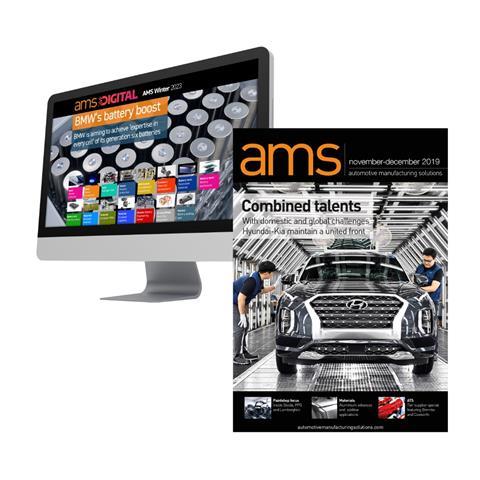










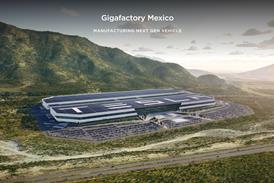




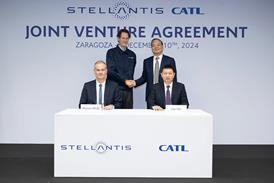
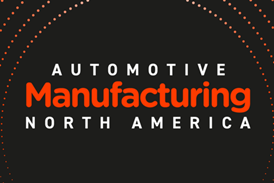










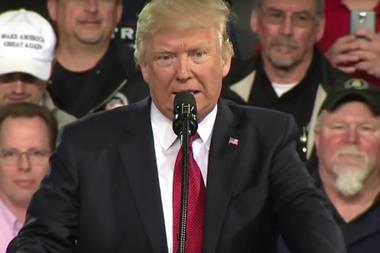

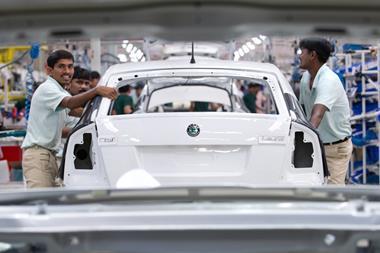
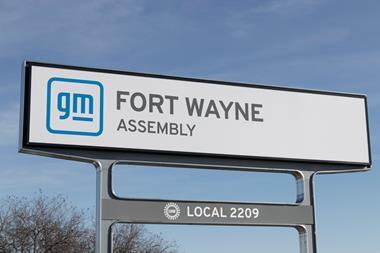





No comments yet